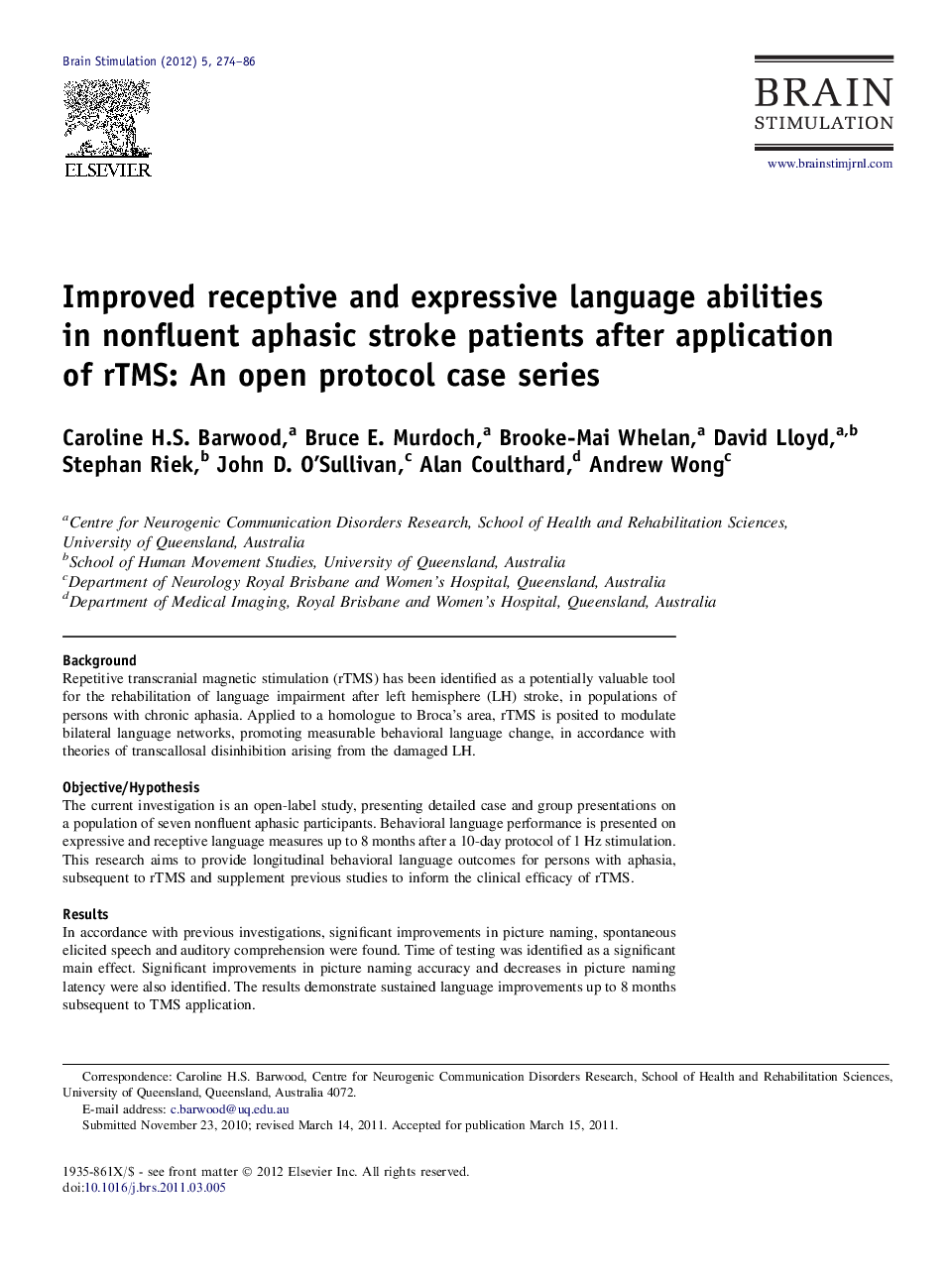| Article ID | Journal | Published Year | Pages | File Type |
|---|---|---|---|---|
| 3039104 | Brain Stimulation | 2012 | 13 Pages |
BackgroundRepetitive transcranial magnetic stimulation (rTMS) has been identified as a potentially valuable tool for the rehabilitation of language impairment after left hemisphere (LH) stroke, in populations of persons with chronic aphasia. Applied to a homologue to Broca’s area, rTMS is posited to modulate bilateral language networks, promoting measurable behavioral language change, in accordance with theories of transcallosal disinhibition arising from the damaged LH.Objective/HypothesisThe current investigation is an open-label study, presenting detailed case and group presentations on a population of seven nonfluent aphasic participants. Behavioral language performance is presented on expressive and receptive language measures up to 8 months after a 10-day protocol of 1 Hz stimulation. This research aims to provide longitudinal behavioral language outcomes for persons with aphasia, subsequent to rTMS and supplement previous studies to inform the clinical efficacy of rTMS.ResultsIn accordance with previous investigations, significant improvements in picture naming, spontaneous elicited speech and auditory comprehension were found. Time of testing was identified as a significant main effect. Significant improvements in picture naming accuracy and decreases in picture naming latency were also identified. The results demonstrate sustained language improvements up to 8 months subsequent to TMS application.ConclusionsThe results of this investigation are consistent with the findings of previous research studies, reporting behavioral language changes after rTMS in nonfluent aphasia. Additional evidence is provided to demonstrate that rTMS may facilitate retrieval mechanisms involved in picture naming.
